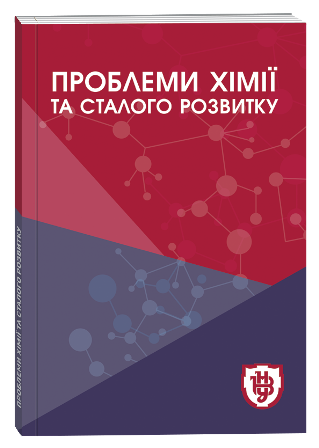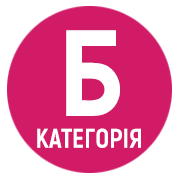PHOTOMETRIC DETERMINATION OF ETHACRYNIC ACID IN DOSAGE FORMS AND BIOFLUIDS OF ATHLETES
DOI:
https://doi.org/10.32782/pcsd-2023-3-2Keywords:
ethacrynic acid, extraction, ion associate, photometric determinationAbstract
It was shown that ethacrynic acid (EA) with the polymethine dye astrafloxin FF (AF) forms an ionic associate (IA). Using the method of mathematical modeling, the energy efficiency of the formation of the IA is substantiated. Molecular modeling of EA-+ AF+ systems and related calculations were carried out using the “HyperChem 8.0” package for various initial options for the arrangement of counterions relative to each other (“single point” procedure). Geometrical optimization of ions was carried out using the MM+ molecular mechanics method. The resulting AIs are fairly well extracted with various aromatic hydrocarbons. The maximum extraction of IA from the aqueous phase is achieved at pH 4–12. The effect of dye concentration on the optical density of toluene extracts of ionic associates of EA with AF was studied. The extraction of IA reaches its maximum value at the concentration of the reagent (1.5–3.0) ·10–4 M. The extraction equilibrium is reached in 50–60 s. The stoichiometry of IA EA with AF was established by spectrophotometric methods of isomolar series and equilibrium shift; the ratio of components is 1:1. A scheme for the formation and extraction of IA is proposed. The conditional molar absorption coefficient of IA is 1.0·105. The graduation graph of the dependence of the optical density of the extracts on the concentration of EA is described by the equation of the straight line A = 0.010 + 0.052c in the concentration range of 0.7–45.4 μg/cm3 EC. The EA detection limit, calculated according to the 3s criterion (n = 5; P = 0.95), is 0.6 μg/cm3. A method of extraction-photometric determination of ethacrynic acid in medicinal forms and biofluids of athletes was developed.
References
Фармацевтична хімія: [арх.11 березня 2021]: підручник / ред. П.О. Безуглий. Вінниця: Нова Книга, 2008. 560 с. ISBN 978-966-382-113-9. 305 с.
Нековаль І.В., Казанюк Т.В. Фармакологія: підручник. 4-е вид., виправл. К.: ВСВ «Медицина», 2011. 520 с. ISBN 978-617-505-147-4.
Штригол С.Ю. Діуретики. Фармацевтична енциклопедія Харків: НФаУ. 2016. URL: http://www.pharmencyclopedia.com.ua/article/2549/diuretiki.
Павлова Ю., Виноградський Б. Відновлення у спорті. Монографія. Л: ЛДУФК; 2011. 204 с.
Cadwallader A.B, de la Torre X, Tieri A, Botrè F. The abuse of diuretics as performance-enhancing drugs and masking agents in sport doping: pharmacology, toxicology and analysis. British Journal of Pharmacology. 2010;161:1-16. PMID: 20718736. PMCID: PMC2962812. DOI: 10.1111/j.1476-5381.2010.00789.x.
Темний бік перемог. 2010. URL: https://gk-press.if.ua/x3068/
Ventura R. and Segura J., Detection of Diuretic Agentsin Doping Control. Journal of Chromatography B: Biomedical Sciences and Applications, Vol. 687, № 1, 1996,pp. 127-144. http://dx.doi.org/10.1016/S0378-4347(96)00279-4.
Bazel Ya., Kormosh Zh., Tolmachev A. State of polymethine (styryl and carbocyanine) indolium derivatives in aqueous solution and their analytical properties. J. Analyt. Chem, 2002. 57. P. 118–124. https://doi.org/10.1023/A:1014091218429






